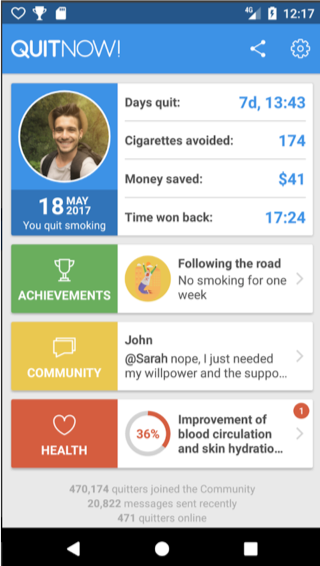Within the stages of change, in order for users to move through the stages from precontemplation - no intention to take action within the next 6 months - into action - changed overt behavior for less than 6 months - the pros of changing need to be higher than the cons of change.

The “see-saw” above acts as a beam balance scale, and the stones represent pros (left) vs. cons (right). The single stone weighing more than the 3 stones shows that the effect of single pro or con is not created equal. So while focus should be placed on both increasing pros and decreasing cons, it is necessary that benefits are increasing more.

A user in the early stages of change of smoking cessation may have downloaded the QuitNow! App. While they wouldn’t have started tracking money & time saved (as they haven’t yet moved into action), exploring the app’s dashboard would reveal that these are just a few of the benefits of smoking cessation along with many health benefits.
The Strong & Weak Principles reveal that the “pros of changing must increase about twice as much as cons must decrease.” Researchers and designers should place twice as much emphasis on raising benefits as on reducing costs to enact recommended behaviors.
Ethics: Placing emphasis on specific pros and cons of changing should be applied carefully. The benefits and costs of a change should be presented so that the user can make an informed choice to proceed to action, if desired. Interventions are never one size fits all, but users should be presented with the same pros/cons so as to not incorrectly influence different demographics.